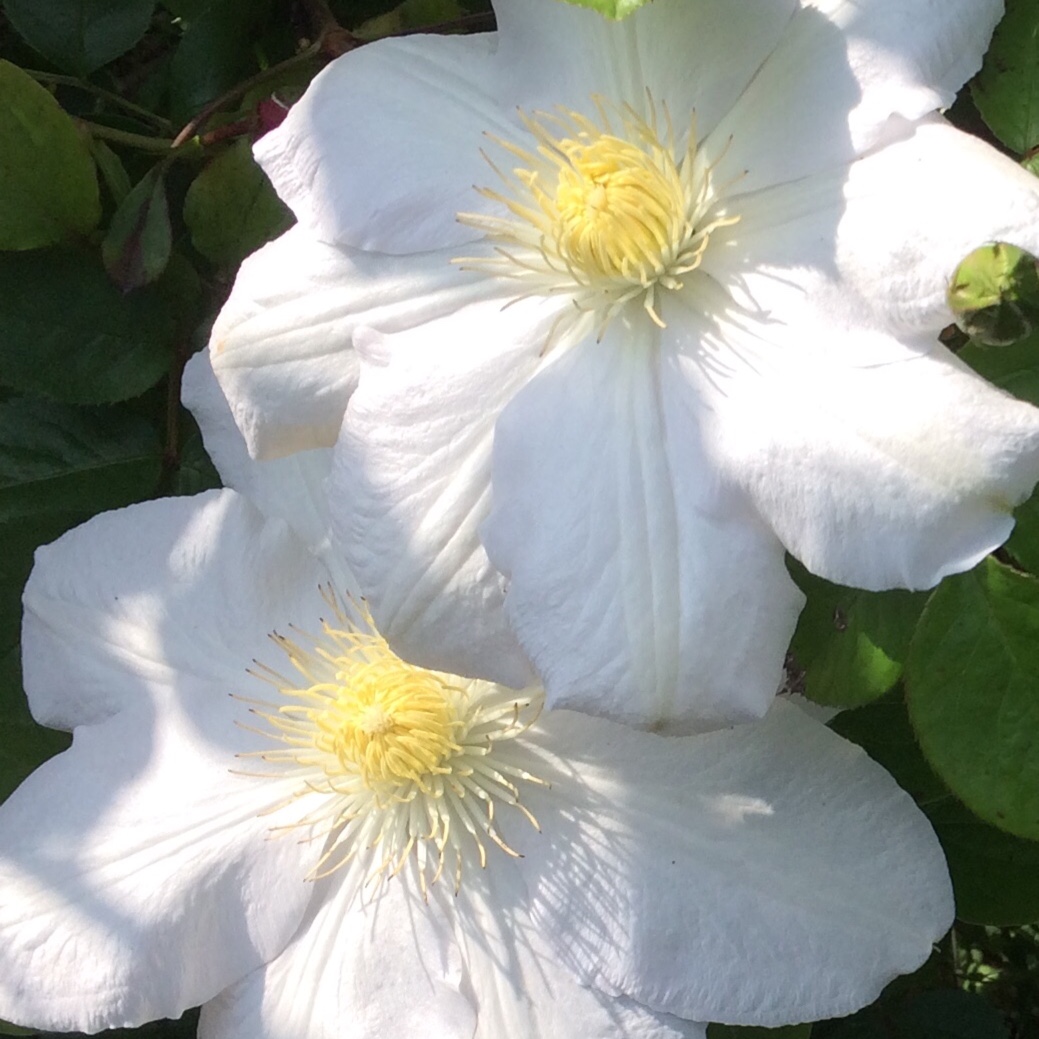
Clematis 'Asagasumi'
Clematis 'Asagasumi'
Group 2 covers a great number of the most popular varieties of clematis. The large-flowered types with the extravagant blooms are all included in this group. These varieties will require partial pruning, as they produce some flowers on stems made last year and then some more flowers on stems made in the current year. The best pruning technique is to trim back the upper growths lightly during late winter when new growth is starting, A few of the older branches can be cut back hard to be replaced by the younger growth, otherwise, lightly trim back to a strong pair of buds. Double flowered varieties produce their double blooms in early summer on last year's wood and a crop of single flowers in mid-summer. 'Asagasumi' is an early, large-flowered clematis, with pearly ice-white blooms
Contributed by @Porky
-
Full sun
-
Occasional watering
-
Full Frost Hardy: 5F (-15°C)
-
Moist and free draining
Common name
Clematis 'Asagasumi'
Latin name
Clematis 'Asagasumi'
type
Climber
family
Ranunculaceae
ph
7.0 - 8.5 Acid - Neutral
Plant & bloom calendar
-
Best time to plant
-
When the plant will bloom
full grown dimensions
 2.00 M
2.00 M
2.00 M
2.00 M
Clematis 'Asagasumi'
Group 2 covers a great number of the most popular varieties of clematis. The large-flowered types with the extravagant blooms are all included in this group. These varieties will require partial pruning, as they produce some flowers on stems made last year and then some more flowers on stems made in the current year. The best pruning technique is to trim back the upper growths lightly during late winter when new growth is starting, A few of the older branches can be cut back hard to be replaced by the younger growth, otherwise, lightly trim back to a strong pair of buds. Double flowered varieties produce their double blooms in early summer on last year's wood and a crop of single flowers in mid-summer. 'Asagasumi' is an early, large-flowered clematis, with pearly ice-white blooms
Planting young plants
From Early Spring TO Late Summer
Soak pot grown new plants well before planting. Dig an over-sized planting hole and mix some good quality organic material with the soil from the hole adding a handful of bone-meal or fish, blood and bone fertiliser. Put some well rotted manure at the base of the hole and cover with soil. Remove the plant from its pot and place in the hole so that the surface of the root-ball is at least 3 inches below the soil level. Fill the space around the root-ball with the soil and organic material mix. Sprinkle some more organic fertiliser around the plant, keeping it away from the stem and water in thoroughly.
Flowering Season
From Early Summer TO Late Summer
Group 2 varieties mostly produce a succession of single, very large flowers in early summer and another crop in late summer, although some may flower continuously through the summer.
Propagation by cuttings
From Late Summer TO Mid Autumn
Semi hard wood cuttings are taken from the current years growth from late summer to mid autumn the bottom of the cuttings is hard and soft on the top. With a sharp knife take a cutting of about 14cms, remove lowest leaves, dip end into rooting hormone, and place round the edge of a pot filled with a suitable compost, water well, they must remain moist till rooted, place under glass but in semi shade.









